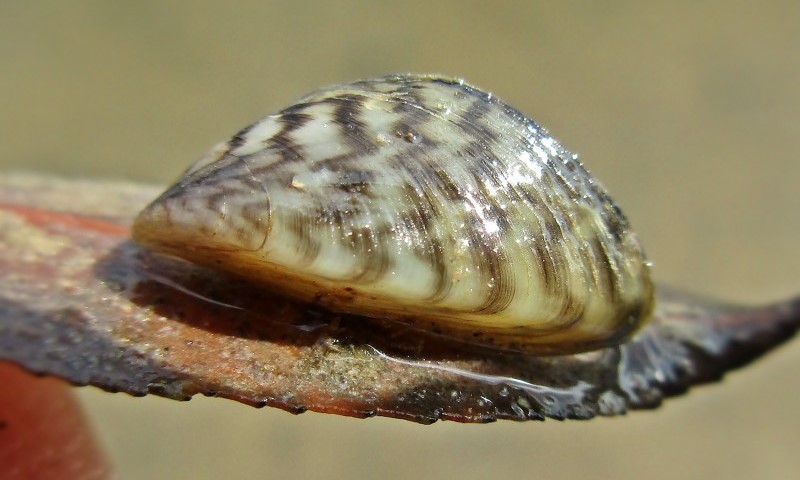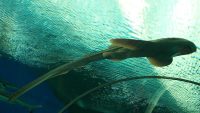Zebra mussels (Dreissena polymorpha) are invasive freshwater mollusks that have become a significant environmental concern in various water bodies around the world. Native to the Caspian and Black Sea regions of Eurasia, they likely entered North America through ballast water discharged from ships in the 1980s. Zebra mussels are small, fingernail-sized mollusks characterized by their distinctive dark and light striped shells, resembling the pattern of a zebra.
One of the primary challenges posed by zebra mussels is their rapid reproduction rate and ability to form dense colonies. These colonies attach to various submerged surfaces, including rocks, docks, pipes, and even other native freshwater mussels. The prolific nature of zebra mussels has led to ecological imbalances, as they outcompete native species for resources and alter the structure of aquatic ecosystems. Moreover, their ability to filter large volumes of water for nutrients makes them efficient, but it can lead to water clarity issues and affect the abundance of plankton, which is a crucial component of aquatic food webs.
The economic impact of zebra mussels is also substantial. They can clog water intake pipes of power plants, industrial facilities, and municipal water suppliers, leading to increased maintenance costs and reduced efficiency. Additionally, recreational activities such as boating and fishing can be hindered, as zebra mussels accumulate on boat hulls and other equipment. Efforts to control the spread of zebra mussels include measures such as ballast water management regulations, awareness campaigns, and monitoring programs in affected water bodies.

Do you want to know more about zebra mussels? Here are 10 interesting facts about zebra mussels to know more about them.
- Invasive Species: Zebra mussels are considered highly invasive species. They were first identified in North America in the late 1980s, having likely been introduced through ballast water discharged from ships.
- Rapid Reproduction: Zebra mussels are prolific reproducers, with each female capable of producing up to one million eggs per year. Their ability to rapidly colonize and form dense populations contributes to their invasive nature.
- Striped Shells: The name “zebra mussel” comes from the striped pattern on their shells, which resembles the black and white stripes of a zebra. The shells are typically triangular or D-shaped and can reach sizes of up to 2 inches.
- Filter Feeders: Zebra mussels are efficient filter feeders, capable of filtering small particles and plankton from the water. While this makes them effective cleaners, it can also lead to significant ecological impacts by disrupting native food chains and reducing water clarity.
- Attachability: Zebra mussels attach themselves to a variety of surfaces using byssal threads, hair-like structures that allow them to anchor to substrates such as rocks, pipes, and even the shells of native mussels.
- Economic Impact: The economic impact of zebra mussels is substantial. They can clog water intake pipes of power plants, industrial facilities, and municipal water suppliers, leading to increased maintenance costs and reduced efficiency.
- Transportation by Boats: Zebra mussels often spread through water transport systems, primarily by attaching to boat hulls, trailers, and other equipment. This facilitates their unintentional introduction to new water bodies.
- Cold Water Tolerance: Zebra mussels are known for their ability to tolerate a wide range of temperatures, allowing them to thrive in both cold and warm water environments. This adaptability contributes to their successful colonization of diverse habitats.
- Impact on Native Mussels: The invasive presence of zebra mussels has led to declines in native mussel populations. They outcompete native species for resources and can attach to and smother the shells of native mussels.
- Prevention and Control Measures: Efforts to control the spread of zebra mussels include regulations on ballast water discharge from ships, public awareness campaigns to prevent accidental transportation, and the implementation of monitoring and management programs in affected water bodies.
Zebra mussels, with their distinctive striped shells, are a testament to the ecological challenges posed by invasive species. Originally from Eurasia, these tiny mollusks have swiftly colonized water bodies in North America, disrupting ecosystems and causing significant economic impacts. Their remarkable reproductive capacity, efficient filter-feeding habits, and adaptability to various environments have made them a formidable force in aquatic habitats.
The striped invaders, attaching themselves to diverse surfaces, have altered water clarity, outcompeted native species, and clogged vital infrastructure. The battle against zebra mussels involves not only understanding their biology and behavior but also implementing preventative measures to curb their spread. The ongoing efforts to mitigate their impact highlight the intricate balance required in preserving the delicate harmony of freshwater ecosystems while safeguarding human interests.



